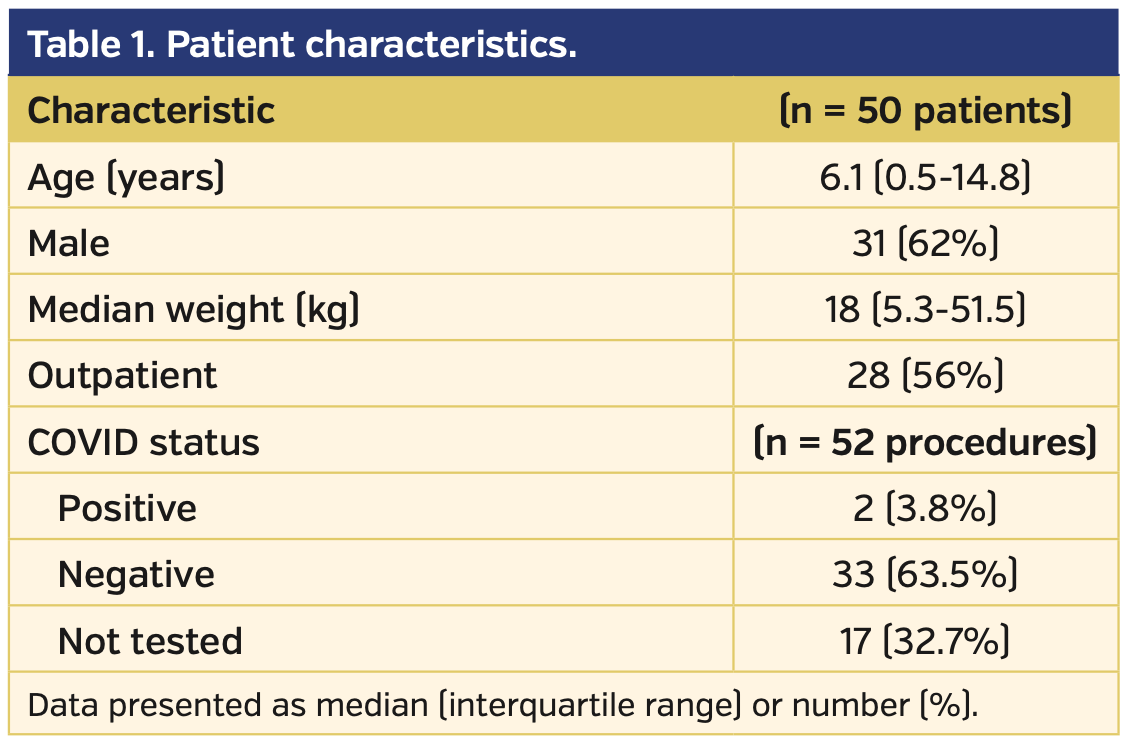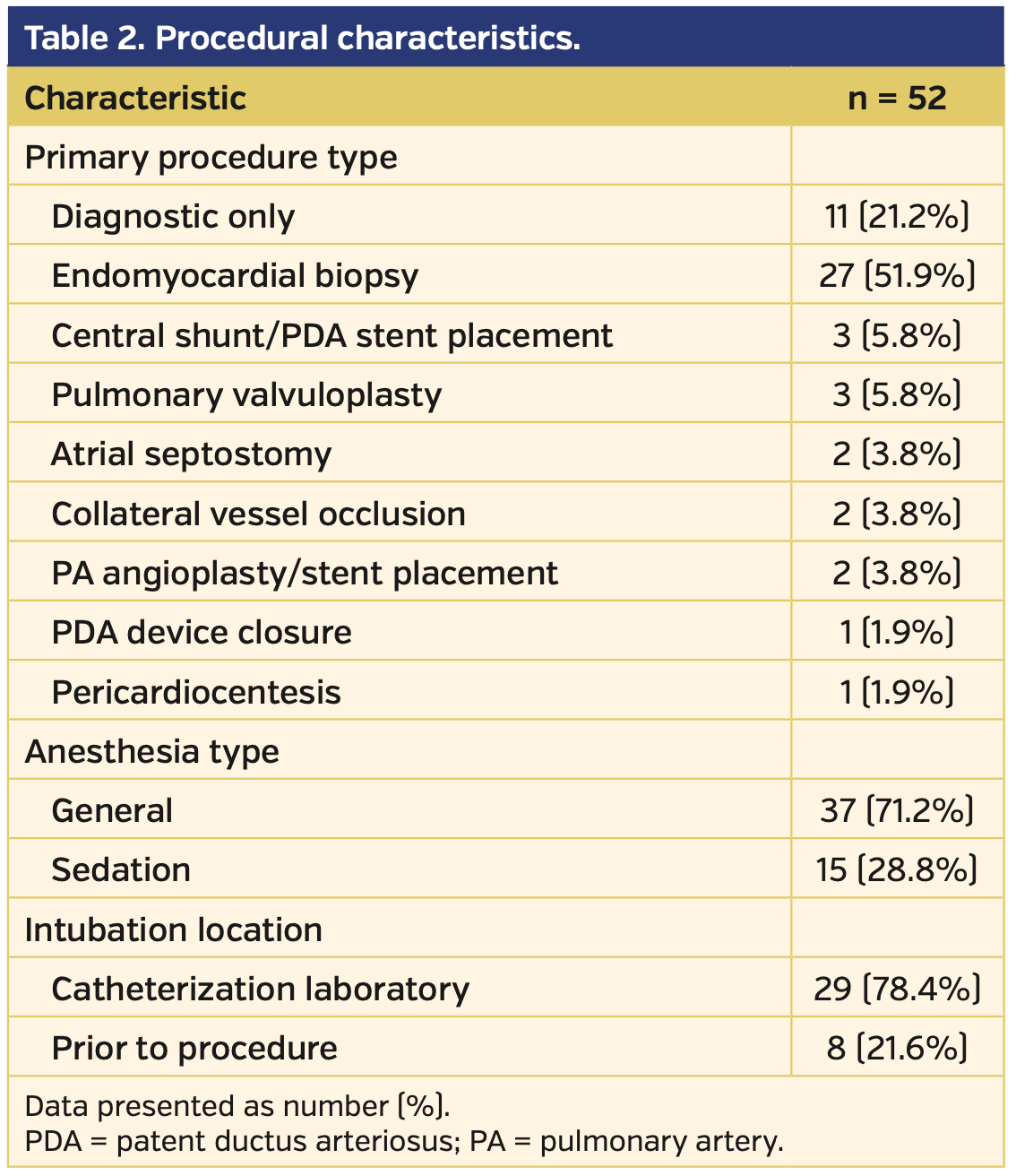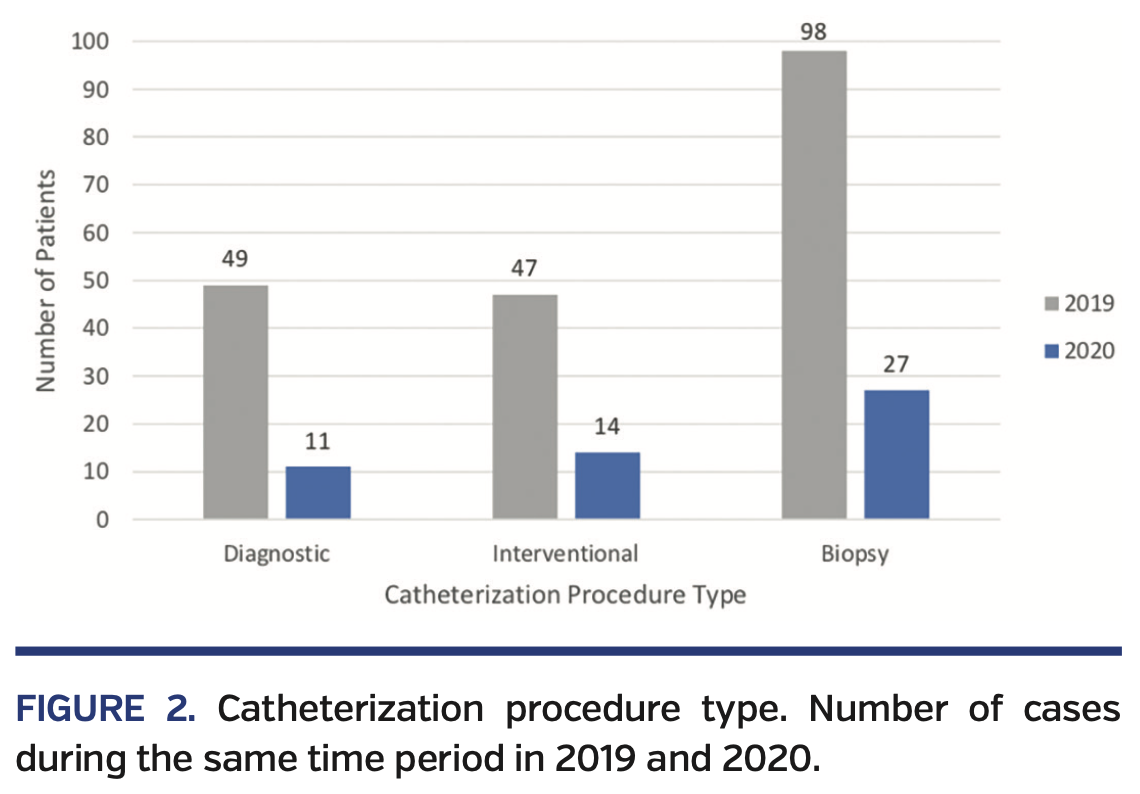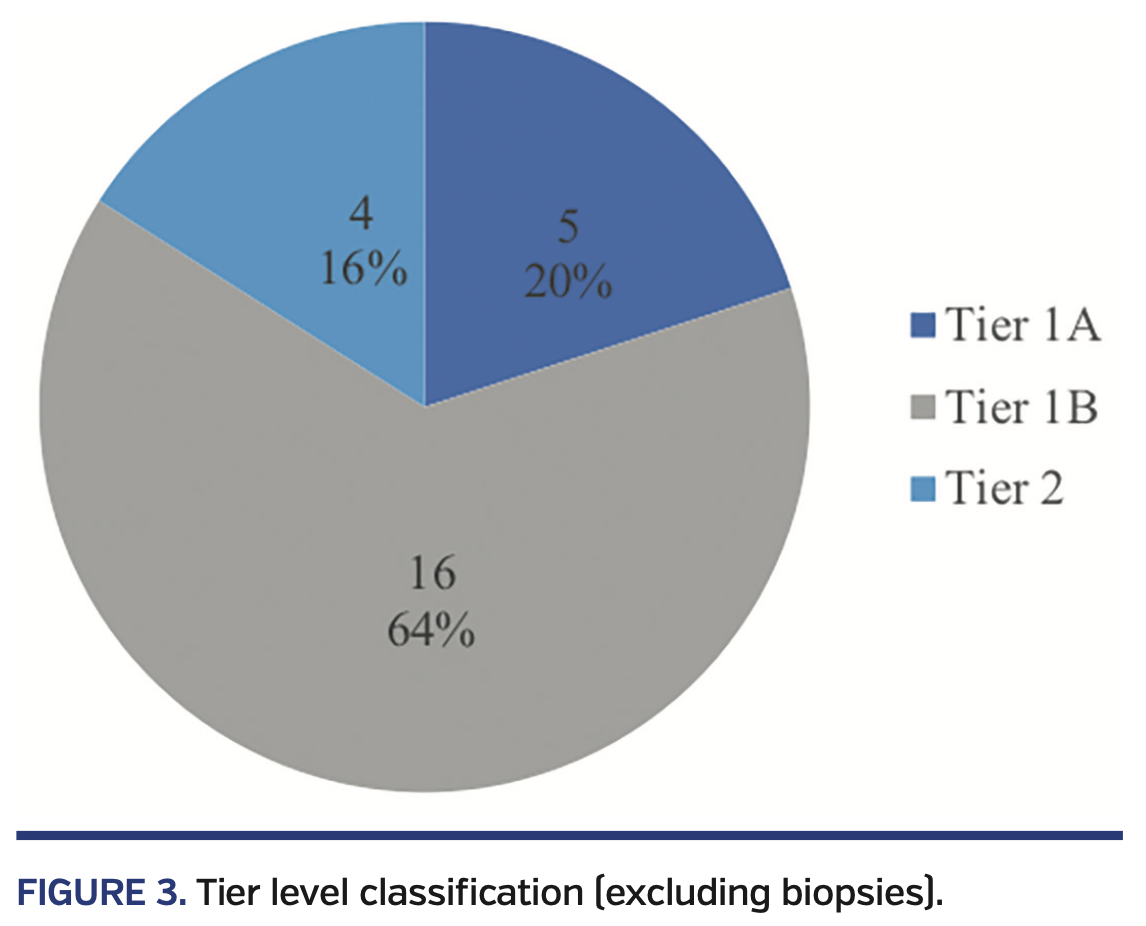ADVERTISEMENT
Non-Elective Pediatric Cardiac Catheterization During COVID-19 Pandemic: A New York Center Experience
Abstract: Background. COVID-19 has led to major changes in hospital systems across the world. In an effort to reduce viral transmission, conserve resources, and in accordance with institutional and state mandates, all elective procedures and surgeries were postponed during the initial outbreak. Guidelines for case selection are limited and management for pediatric catheterization laboratories during this crisis is unprecedented. Objectives. To report the protocols and case selection of a high-volume pediatric cardiac catheterization laboratory in the epicenter of the novel coronavirus (COVID-19) pandemic. Methods. All pediatric cardiac catheterization procedures from March 16, 2020 through May 10, 2020 were reviewed. Changes to case selection and periprocedural workflow are described. Data were collected on COVID-19 testing status and primary procedure type, and all procedures were classified by urgency. Results. There were 52 catheterizations performed on 50 patients. Endomyocardial biopsies were the most common procedure (n = 27; 52%). Interventional and diagnostic procedures represented 27% (n = 14) and 21% (n = 11) of cases, respectively. Two emergent procedures (3.8%) were performed on patients with positive COVID-19 testing. Most cases were performed on patients with negative COVID-19 testing (n = 33; 94%). Conclusions. Adjusting to the COVID-19 pandemic in a high-volume pediatric cardiac catheterization laboratory can be safely and effectively managed by prioritizing emergent and urgent cases and modifying workflow operations. The experience of this center may assist other pediatric cardiac catheterization laboratories in adapting to similar practice changes as the pandemic continues to evolve.
J INVASIVE CARDIOL 2020;32(7):E178-E181.
Key words: case selection, pediatric cardiology, protocol
The novel coronavirus disease (COVID-19) pandemic has led to major clinical and operational practice changes in hospital systems across the world. Within the United States, New York City surfaced as the country’s epicenter of the pandemic. As of May 17, 2020, there have been 190,408 confirmed cases of COVID-19 infection in New York City.1 Hospitals have been challenged with the surge of COVID-19 patients and associated depletion of critical resources and equipment. In order to mitigate risk and optimize resource utilization, all elective surgeries and catheterizations were postponed. However, given the nature of congenital heart disease, centers have needed to implement protocols to continue to perform non-elective surgeries and catheterizations.2
There are limited data to guide any heart center in the midst of this pandemic. Guidelines have been designed and published from leading associations such as the American College of Cardiology (ACC) and the Society for Cardiovascular Angiography and Interventions (SCAI).3,4 While these guidelines focus on adult patients, many factors can be translated to pediatric catheterization laboratories, including facilitating bedside procedures when possible, coordinated intubation prior to arrival in the catheterization laboratory, avoiding elective procedures, downsizing personnel physically in the lab, and utilizing appropriate personal protective equipment (PPE).3,4 A recent national survey of 56 pediatric cardiac catheterization laboratories showed agreement among centers regarding which procedures were considered elective, semielective, urgent, and emergent, which can be used to guide case selection.5
The purpose of this study is to describe the experience and practice of a high-volume pediatric cardiac catheterization laboratory in New York City during the COVID-19 pandemic in hopes of providing a model for other labs to learn from and adapt to their context as the pandemic continues.
Methods
This was a retrospective, single-center, case series study. The study was reviewed and approved by the institutional review board at Columbia University Medical Center. Data were analyzed from all catheterization procedures performed by the interventional cardiology team at New York Presbyterian Hospital – Morgan Stanley Children’s Hospital (NYP-MSCH) during the initial COVID-19 outbreak. This period was defined as the time in which all elective catheterizations were postponed in accordance with institutional and New York state policy, from March 16, 2020 through May 10, 2020. Data from the same time period in 2019 were also collected for comparison.
Case selection and classification. A hospital-wide multidisciplinary review committee was formed to assess the urgency of surgeries and procedures. Catheterizations were performed after review and approval from this committee, with the exception of emergency procedures. Endomyocardial biopsies were selected and approved by the heart transplant team and only performed for patients with clinical or laboratory concern for rejection or within 6 months of transplantation. All cases were classified by the proposed tier system previously published.5 Biopsy cases were excluded from tier classification because the selection process for these cases was independent and site specific, limiting generalizability.
COVID-19 testing. All patients were screened for symptoms within 48 hours of a scheduled procedure beginning March 16, 2020. Rapid COVID-19 testing became available at our institution on April 6, 2020, and thereafter all patients were tested within 24 hours prior to procedure. Prior to this date, testing was performed only if symptomatic and with known exposure. COVID-19 testing was performed using quantitative reverse transcription polymerase chain reaction (RT-PCR) tests on nasopharyngeal swabs (Xpert Xpress SARS-CoV-2; Cepheid) with a turnaround time of less than 2 hours. For outpatient cases, patients and one designated caregiver arrived to the hospital with facemasks on and were triaged to a designated isolation room for COVID-19 testing. If positive, the case was canceled. If negative, patients and their designated family member were moved to the waiting room and continued with typical preprocedure care.
Neonates born to COVID-19 positive mothers had testing performed at 24 hours of life. Regardless of test result, exposed infants were treated as “patient under investigation” (PUI) and full isolation precautions were applied.
PPE use. Droplet (mask and eye protection) and contact (gown and gloves) precautions were utilized for all periprocedural patients. During catheterization procedures, droplet and contact precautions as well as airborne precautions (N95 respirator mask) were employed for all patients due to the aerosolizing nature of intubation and extubation6 and risk of false-negative test results in detecting COVID-19.7
Personnel protocol. Given resource allocation, staffing changes, and reduced case volume, only one of two existing catheterization laboratories was utilized during this time period. One attending interventional cardiologist performed the procedure. No assistant initially scrubbed into procedures, including fellows, in order to reduce resources and preserve PPE. If assistance was needed, another attending cardiologist joined. Two nurses and two technologists were assigned to each case; one of each was designated as the “in room” contact and stayed inside the lab for the duration of the procedure. The second nurse and technologist remained outside of the lab to assist with equipment needs. This was done to reduce traffic in and out of the lab and to minimize equipment contamination. Negative-pressure air flow capability was not available and thus for COVID-19 positive patients and PUI, all personnel waited 20 minutes after intubation for particles to be removed by the air filter system prior to re-entering the room.
Statistical analysis. Descriptive statistics were performed for the data collection, with categorical data presented as counts with percentages and continuous data are presented as median (interquartile range [IQR]).
Results
During the initial COVID-19 period, a total of 52 procedures were performed on 50 patients (Table 1). A detailed illustration of the periprocedural protocol is shown in Figure 1, as described above. The median age of patients was 6.1 years (IQR, 0.5-14.8 years). There was a slight male predominance (62%). Inpatients represented 44% of all cases performed. Diagnostic catheterizations were performed in 21% of cases (n = 11) and interventional cases represented 27% of all cases performed (n = 14) (Table 2). Endomyocardial biopsies represented a significant proportion of total cases (n = 27; 52%) and the vast majority of outpatient cases (n = 23; 82%), which reflects the large transplant volume at this center. In comparison, there were 194 catheterization procedures performed during the same time period in 2019 (Figure 2).
There were 5 cases (20%) classified as tier 1A, which included 4 emergent cases: balloon atrial septostomy for a newborn with transposition of the great arteries (TGA), left atrial decompression for a patient with known cardiomyopathy on extracorporeal membrane oxygenation (ECMO), coronary angiography for a patient with concern for coronary ischemia in the acute postoperative period, and pericardiocentesis for a patient with tamponade (Figure 3). Sixteen cases (64%) were classified as tier 1B and 4 cases (16%) as tier 2.
The majority of patients (n = 33; 94%) tested negative for COVID-19 within 24 hours of their procedure. One outpatient procedure was canceled due to a COVID-19 positive PCR. There were 4 neonates born to COVID-19 positive mothers, including 1 patient who underwent 2 catheterization procedures. One of the 4 infants did not undergo testing prior to their procedure due to the emergent nature of their condition (balloon atrial septostomy in TGA).
The majority of cases (n = 37; 71.2%) required general anesthesia (Table 2). Twenty-nine cases (78.4%) required intubation in the catheterization laboratory and 8 patients (21.6%) were intubated in the intensive care unit prior to their procedure. The remaining cases (n = 15; 28.8%) were done with moderate sedation.
Discussion
This study describes the experience of a high-volume pediatric catheterization lab in the United States epicenter of the COVID-19 pandemic. The case selection process and periprocedural protocols were adapted to meet the needs of these extraordinary circumstances. This experience demonstrates that catheterizations can be safely performed with proper operational protocols and resources in place. During this study period, no catheterization lab staff members tested positive for COVID-19. While causal relationship with periprocedural protocols can certainly not be inferred, the fact that staff members remained healthy was encouraging.
As COVID-19 testing availability improved over time, universal testing was implemented, which informed infectious risk levels. As evidenced by 1 asymptomatic COVID-19 carrier detected by universal testing in this short period, these protocols have effectively protected personnel and patients by minimizing viral exposure and optimizing resource utilization. As testing becomes more widespread and centers increase procedure volume, asymptomatic carriers8-10 will become an important consideration. Furthermore, as case volume “re-opens,” this center plans to continue universal preprocedure COVID-19 testing while paying careful attention to patient arrival times, social distancing measures, and coordination of testing with procedure schedules.
Most cases were not performed for COVID-19-related indications. This was an expected finding, as the relationship between COVID-19 and congenital heart disease is not yet understood.11 There were 2 COVID-19-positive emergency cases (left atrial decompression for ECMO and pericardiocentesis) performed on patients whose clinical presentations may have been affected by COVID-19 infection. More COVID-related cases could be expected to arise as the pandemic continues.
Given the major changes to the periprocedural workflow and case selection, the possible detrimental effects of case deferment should be considered. While it is too soon to determine the long-term effects of the pandemic on non-COVID related patient care and outcomes, more studies are needed.
Conclusion
The COVID-19 pandemic has required adjustments to case selection and periprocedural protocols. These changes can be safely and effectively managed in a high-volume pediatric catheterization lab to protect staff members and patients and to optimize resource utilization. The experience of this center may assist other pediatric cardiac catheterization labs in adapting to similar practice changes as the pandemic continues to evolve.
From the Division of Pediatric Cardiology, Department of Pediatrics, Columbia University Irving Medical Center, Morgan Stanley Children’s Hospital, New York, New York.
Disclosure: The authors have completed and returned the ICMJE Form for Disclosure of Potential Conflicts of Interest. The authors report no conflicts of interest regarding the content herein.
Manuscript submitted May 18, 2020 and accepted May 22, 2020.
Address for correspondence: Oliver M. Barry, MD, Division of Pediatric Cardiology, Columbia University Irving Medical Center, 3959 Broadway-2N, New York, NY 10032. Email: omb2104@cumc.columbia.edu
- COVID-19 Data: Cases, hospitalizations, and deaths. New York City (NYC) Health Department. Available at https://www1.nyc.gov/site/doh/covid/covid-19-data.page. 2020. Accessed on May 13, 2020.
- Stephens EH, Dearani JA, Guleserian KJ, et al. COVID-19: crisis management in congenital heart surgery. Ann Thorac Surg. 2020 Apr 11.
- Welt FGP, Shah PB, Aronow HD, et al. Catheterization laboratory considerations during the coronavirus (COVID-19) pandemic. From the ACC’s Interventional Council and SCAI. 2020;75:2372-2375.
- Szerlip M, Anwaruddin S, Aronow HD, et al. Considerations for cardiac catheterization laboratory procedures during the COVID-19 pandemic perspectives from the Society for Cardiovascular Angiography and Interventions Emerging Leader Mentorship (SCAI ELM) Members and Graduates. Catheter Cardiovasc Interv. 2020 Mar 25 (Epub ahead of print).
- Morray BH, Gordon BM, Crystal MA, et al. Resource allocation and decision making for pediatric and congenital cardiac catheterization during the novel coronavirus SARS-CoV-2 (COVID-19) pandemic: a U.S. multi-institutional perspective. J Invasive Cardiol. 2020;32:E103-E109.
- COVID-19 Information for Health Care Professionals. Available at https://www.asahq.org/about-asa/governance-and-committees/asa-committees/committee-on-occupational-health/coronavirus. 2020. Accessed May 12, 2020.
- Ai T, Yang Z, Hou H, et al. Correlation of chest CT and RT-PCR testing in coronavirus disease 2019 (COVID-19) in China: a report of 1014 cases. Radiology. 2020:200642.
- Cruz AT, Zeichner SL. COVID-19 in children: initial characterization of the pediatric disease. Pediatrics. 2020;145:e20200834.
- Dong Y, Mo X, Hu Y, et al. Epidemiology of COVID-19 among children in China. Pediatrics. 2020;145:e20200702.
- Lu X, Zhang L, Du H, et al. SARS-CoV-2 infection in children. N Engl J Med. 2020;382:1663-1665.
- Li Q, Guan X, Wu P, et al. Early transmission dynamics in Wuhan, China, of novel coronavirus-infected pneumonia. N Engl J Med. 2020;382:1199-1207.


















